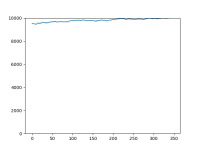pood
Contributor
- Joined
- Oct 25, 2021
- Messages
- 7,181
- Basic Beliefs
- agnostic
Here are a couple of topics that interest me, which might make separate threads, and I’d specifically like the input of actual biologists here (of which I guess Peez is one).
How much of a role does genetic drift play in evolution vs. natural selection? The biochemist Laurence Moran seems to think, based on his Sandwalk blog, that drift is pre-eminent, which he calls “evolution by accident.”
What, really, can we say about the possibility of life, or complex life, on other worlds? I’ve read that physicists and astronomers are generally optimistic about such life, but biologists not so much. It’s always pointed out that life started pretty quickly on the earth after it cooled, but it’s also noteworthy that it took a LOOOOONG time for eukaryotes to evolve. I am wondering whether that key step might be ridiculously unlikely, almost a one-off, suggesting that perhaps the complex life we see on earth might be unique, at least in the Milky Way?
How much of a role does genetic drift play in evolution vs. natural selection? The biochemist Laurence Moran seems to think, based on his Sandwalk blog, that drift is pre-eminent, which he calls “evolution by accident.”
What, really, can we say about the possibility of life, or complex life, on other worlds? I’ve read that physicists and astronomers are generally optimistic about such life, but biologists not so much. It’s always pointed out that life started pretty quickly on the earth after it cooled, but it’s also noteworthy that it took a LOOOOONG time for eukaryotes to evolve. I am wondering whether that key step might be ridiculously unlikely, almost a one-off, suggesting that perhaps the complex life we see on earth might be unique, at least in the Milky Way?

 But there is no nice phylogenetic tree to examine in relating eukaryotes to archaeotes. The "simplest [known] form of the eukaryote" already has ALL the differences from prokaryotes I listed above.
But there is no nice phylogenetic tree to examine in relating eukaryotes to archaeotes. The "simplest [known] form of the eukaryote" already has ALL the differences from prokaryotes I listed above.






